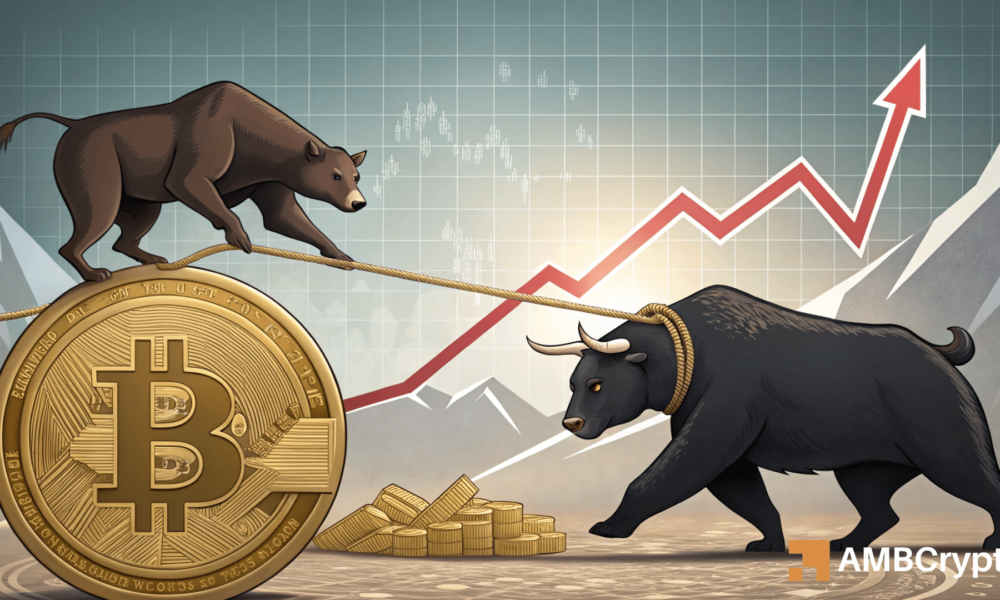Binance Funding Rates Dip as Short Positions Surge Amid Bitcoin’s Stability
On July 7th, Bitcoin [BTC] maintained a price well above $100K, yet an intriguing divergence surfaced as Binance Funding Rates turned negative despite the uptrend. This anomaly indicates that traders are increasingly betting against Bitcoin, opening short positions in anticipation of a price reversal. Historically, when funding rates decline while prices remain strong, short traders have often faced liquidation, resulting in a short squeeze that drives prices higher. While this isn’t a surefire prediction of market movement, the current imbalance in funding rates suggests a bullish sentiment, contingent on sustaining momentum amidst a crowded short market.
Declining User Activity Raises Concerns
Despite Bitcoin’s stable price, not everything is flourishing in the crypto ecosystem. On-chain activity has significantly declined, with the transaction count dropping to 50.3K and network growth falling to 57.6K, both marking multi-month lows. This downturn in activity reflects a dwindling interest from users, potentially due to cautious retail sentiment or sidelined participation during elevated prices. The decrease in new users and transaction volume typically signals retail fatigue at such high valuations, and unless this trend is reversed swiftly, a local slowdown could be imminent. Renewed interest and participation are crucial for sustaining upward momentum in the market.
The Overhyping of Bitcoin’s Scarcity Narrative
Amidst the price stability and declining user activity, Bitcoin’s Stock-to-Flow Ratio has surged to 458, significantly above usual levels. This metric captures the relationship between the current supply and its annual production, reinforcing the narrative of increasing scarcity. While this uptick may excite long-term holders, it raises an important question: Is Bitcoin’s perceived scarcity becoming overstated? When the narrative of scarcity grows while actual network utilization diminishes, the gap between perceived value and real-world application widens, potentially detracting from Bitcoin’s long-term viability.
Valuation Outpacing Utility: A Warning Signal
Another critical metric, the NVT Ratio with Circulation, recently surged to 1,527, the highest level seen in over a year. This ratio assesses whether Bitcoin’s market capitalization is justified by its transaction activity. A climbing NVT can indicate that the valuation is climbing faster than actual usage, particularly in a climate of weak network activity. Coupled with the decrease in transaction volume and user growth, this spike suggests Bitcoin may be trading at an inflated value. Historically, such elevated NVT ratios often foreshadow local market tops, prompting caution among investors who remain optimistic about further gains.
BTC Outflows Indicate Strong Conviction Amid Volatility
Amidst mixed indicators, Bitcoin holders demonstrate resilience. On July 7th, the market witnessed a net exchange outflow of $30.14 million, reinforcing an ongoing trend of coins being moved off exchanges. This trend indicates solid conviction among holders who prefer custody of their assets rather than selling immediately. However, this steadfastness is now facing its own set of challenges due to conflicting signals that suggest both accumulation and weakening network dynamics. As market confidence holds, it remains critical to gauge how these shifts impact future volatility.
Balancing Optimism and Caution in a Fragile Market
In summation, while Bitcoin’s outflows and declining funding rates hint at underlying bullish signals, the drop in on-chain activity and potential valuation excesses introduce significant caution. The possibility of a short squeeze persists, yet without renewed transaction growth or expanding network capacity, upward momentum may falter. As the market stands poised between optimism and the fragility of its underlying health, traders must navigate these conflicting signals carefully. With on-chain stability appearing tenuous, any failure of price support could trigger a rapid shift in sentiment among market participants.


